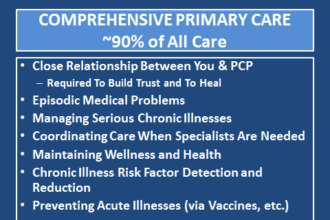 As the Ebola virus lands closer to home, it has been disappointing to watch the hype, inaccuracies and blame circulating in various media on what continues as a yet-to-be controlled humanitarian and health crisis in West Africa.
As the Ebola virus lands closer to home, it has been disappointing to watch the hype, inaccuracies and blame circulating in various media on what continues as a yet-to-be controlled humanitarian and health crisis in West Africa.
 As the Ebola virus lands closer to home, it has been disappointing to watch the hype, inaccuracies and blame circulating in various media on what continues as a yet-to-be controlled humanitarian and health crisis in West Africa. Those who have been aware of this evolving issue, such as many well-trained, conscientious infection prevention professionals around the country, know this disease has been threatening the West African countries of Liberia, Sierra Leone and Guinea with increasing magnitude since March of this year, taking the lives of far too many West Africans over the last 7+ months. As a result, Ebola abroad, and now for the first time in the US, is also a very dynamic situation, like much in healthcare. As such, responsible healthcare journalists, weekend warrior bloggers or persons with a Twitter account might want to take into account that as more is learned, protocols and best practices will, as expected, evolve.
As the Ebola virus lands closer to home, it has been disappointing to watch the hype, inaccuracies and blame circulating in various media on what continues as a yet-to-be controlled humanitarian and health crisis in West Africa. Those who have been aware of this evolving issue, such as many well-trained, conscientious infection prevention professionals around the country, know this disease has been threatening the West African countries of Liberia, Sierra Leone and Guinea with increasing magnitude since March of this year, taking the lives of far too many West Africans over the last 7+ months. As a result, Ebola abroad, and now for the first time in the US, is also a very dynamic situation, like much in healthcare. As such, responsible healthcare journalists, weekend warrior bloggers or persons with a Twitter account might want to take into account that as more is learned, protocols and best practices will, as expected, evolve.
An excellent Infectious Disease (ID) blog sharing good information about Ebola is Controversies in Hospital Infection Prevention, hosted by three ID physicians from the University of Iowa: Mike Edmond MD, MPH, MPA, Chief Quality Officer, Eli Perencevich MD, and Dan Diekema MD, Director, Infectious Disease. In July, Edmond (@Mike_Edmond) posted, Ebola Hemorrhagic Fever: A Primer, which contains foundational information about the virus, much of which is based on CDC Ebola interim guidances, that are also evolving. And to put Ebola in a more realistic perspective and take away some of its horror film power, it is a very slow-moving infectious disease per Eli Perencevich MD (@eliowa), who writes in an October 9th post, Traveling with Ebola is not traveling with influenza:
The…most important difference between the current Ebola outbreak and the 2009 H1N1 pandemic is that Ebola is very slow-moving….the first case of Ebola is thought to have occurred 307 days ago on December 6th in a two-year old boy. Since that time there have been an estimated 8,032 cases …If you compare a similar 307-day period for 2009 H1N1, April 12, 2009 to February 12, 2010 CDC estimated between 42 million and 86 million cases occurred in the US with a mid-level estimate of 59 million people infected…7300 times more cases of H1N1 using the mid-level estimate
Fast Company staff writer, Rebecca Greenfield (@rzgreenfield), in Ebola Deeply is the Only Place You Should Be Getting Ebola News, directs those in search of Ebola related content without the hype, turn to the single source news website, Ebola Deeply, started by Lara Setrakian (@Lara) a former ABC News and Bloomberg reporter. After clicking onto the site, readers are immediately drawn to the NYTimes video story by video journalist, Ben C Solomon, also embedded below. The story shows what life is like on the streets of Monrovia for Gordon, a Liberian Ebola ambulance driver, separated from his family as a safety precaution for over five months. What he describes sounds like going to war against an invisible opponent, with limited armor and safe harbors. Certainly in a resource rich country like ours, we should be able to handle what courageous true front line Ebola warriors are fighting with much less.
While healthy critique of those charged to create solutions in the US provides a good check and balance, it’s disappointing to watch the finger pointing that rears up in such a well-resourced, educated country, especially as those in West Africa have far less time to discuss and instead are using that energy to improvise and stay alive while caring for their thousands of ill patients vs our limited number of cases to date. In fact, more people died in the last week due to all medical harm in the US than to an outlier of an infectious disease like Ebola. To add even greater perspective, a recent New York Times article by Elisabeth Rosenthal MD, For Ebola Health Workers Risks and Duty Collide, closes with the following:
…Meanwhile, Dr. Cooke said she has tremendous admiration for the doctors in West Africa: “It’s been inspiring to hear African health care workers saying ‘I’m a doctor, these are my people. There’s no choice.’ It’s a fundamental reminder of what it means to be an M.D.”
And with the arrival and death of an infected patient to a Dallas hospital, and the subsequent infection of two nurses who treated him, many of the existing cracks in our healthcare system are being exposed by the media on the larger stage that is now practicing medicine. In an interview on the Today Show last Thursday, a nurse working at the hospital spoke with Matt Lauer, sharing the need to come forward knowing full well she might lose her job. Not knowing the full story, the fact that this could happen comes as no surprise to those working in healthcare. However, it is important to note we still have one of, if not the, very best systems in the world–cracks and all. A safe healthcare system has a just culture, and when a nurse “voices concern” about his/her own safety, as well as that of patients and colleagues, he/she is heard, even thanked, by those who can fix and address those concerns. Many healthcare organizations across the US are creating environments that welcome this voice, yet others are still far from adopting this culture. While not at all familiar with the culture at this particular hospital, nor the institution’s side of the story, it appears from the Today Show interview this nurse voiced concerns that initially went unaddressed. To this end, we see how failure to embrace elements of a just culture could affect patient and provider safety in real-time. This could be an unfortunate example of a long existing need for greater urgency around culture change in healthcare.
And despite the “he said, she said” or “they should of…” thinking, there are many looking for solutions to stop the outbreak in Africa. In a recent @FastCoExist article, Can Better Design Stop Ebola? How Creative Minds Can Help, Jessica Leber writes:
…On just one day’s notice, almost 200 people crowded an auditorium at Columbia University’s engineering school on a Thursday evening in early October. Engineers, designers, and public health researchers were there to learn and brainstorm, and do so quickly…Columbia isn’t the only institution interested in applying design thinking to the health and humanitarian disaster. On October 9, USAID, partnered with the innovation platform OpenIDEO, the CDC, the Department of Defense and the White House, announced its sixth in a series of “grand challenges for development” focused on crowdsourcing ideas for better tools to fight the virus. Anyone can contribute to the brainstorm, and the government hopes to begin funding the strongest ideas in a more formal challenge competition “in a matter of weeks.”…
Getting to the other side of this real-time test of our infection prevention and containment abilities at home, the hope is that we will rise to the challenge and become that much stronger as a national healthcare system for having gone through the experience. As Edmond writes in a Controversies in Hospital Infection Prevention post on October 14th, Ebola: The Questions Keep Coming:
…the Ebola crisis is challenging us in many ways and will likely continue to do so for quite some time. But perhaps we’ll emerge from this with a more thoughtful approach to patient care that improves safety without sacrificing quality.






